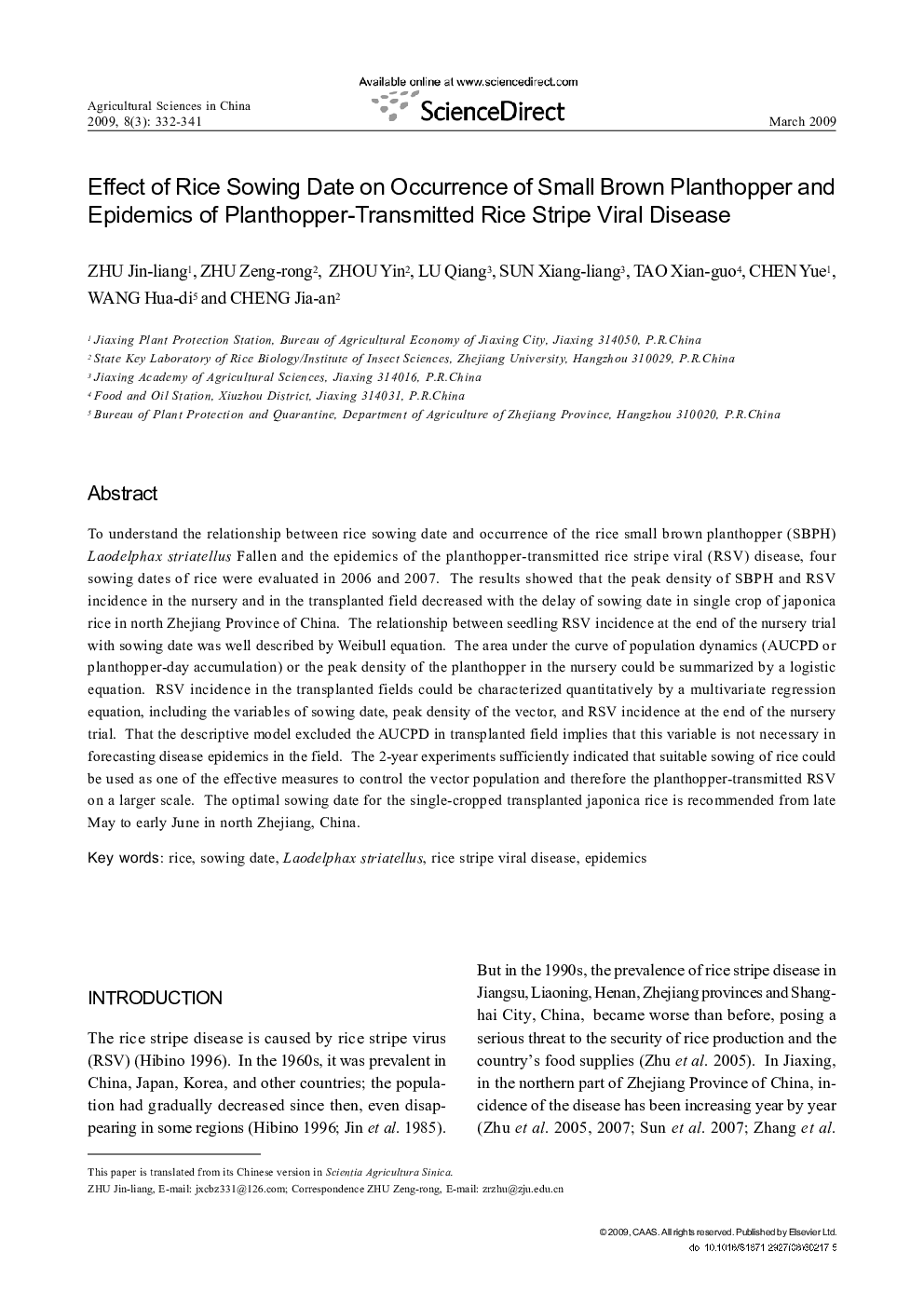| Article ID | Journal | Published Year | Pages | File Type |
|---|---|---|---|---|
| 4490409 | Agricultural Sciences in China | 2009 | 10 Pages |
To understand the relationship between rice sowing date and occurrence of the rice small brown planthopper (SBPH) Laodelphax striatellus Fallen and the epidemics of the planthopper-transmitted rice stripe viral (RSV) disease, four sowing dates of rice were evaluated in 2006 and 2007. The results showed that the peak density of SBPH and RSV incidence in the nursery and in the transplanted field decreased with the delay of sowing date in single crop of japonica rice in north Zhejiang Province of China. The relationship between seedling RSV incidence at the end of the nursery trial with sowing date was well described by Weibull equation. The area under the curve of population dynamics (AUCPD or planthopper-day accumulation) or the peak density of the planthopper in the nursery could be summarized by a logistic equation. RSV incidence in the transplanted fields could be characterized quantitatively by a multivariate regression equation, including the variables of sowing date, peak density of the vector, and RSV incidence at the end of the nursery trial. That the descriptive model excluded the AUCPD in transplanted field implies that this variable is not necessary in forecasting disease epidemics in the field. The 2-year experiments sufficiently indicated that suitable sowing of rice could be used as one of the effective measures to control the vector population and therefore the planthopper-transmitted RSV on a larger scale. The optimal sowing date for the single-cropped transplanted japonica rice is recommended from late May to early June in north Zhejiang, China.
